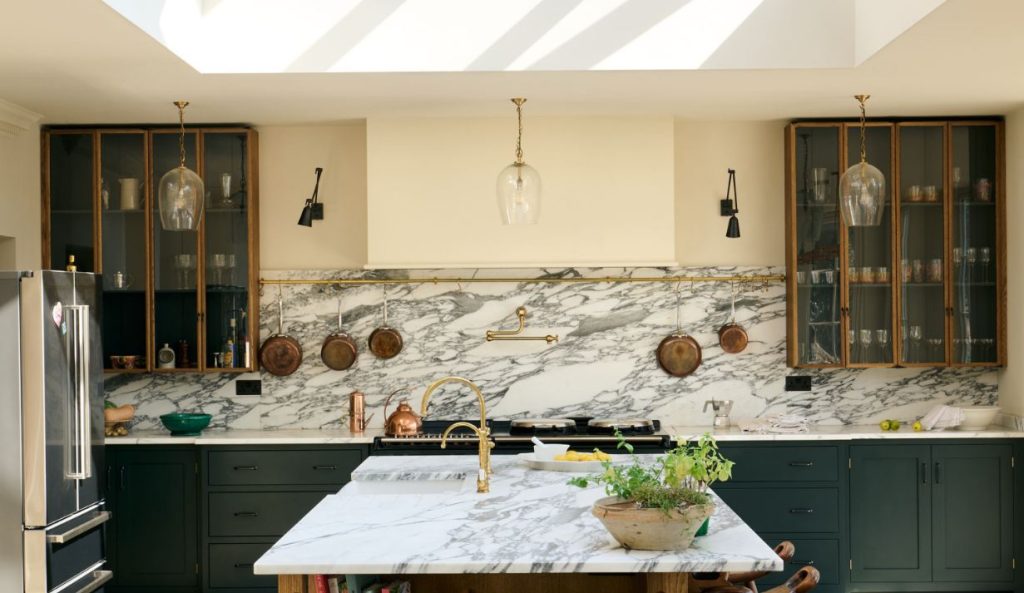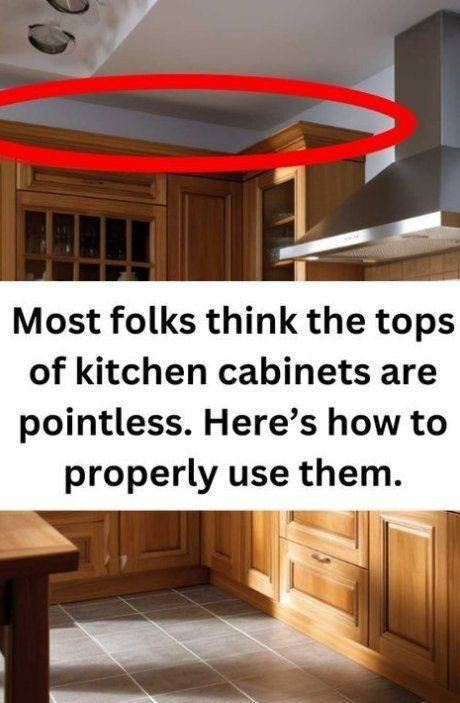Many kitchens feature a gap between the top of the upper cabinets and the ceiling. Rather than letting that area remain wasted, it can be transformed into a functional or decorative zone. Using this space can help you store seldom-used items, showcase pieces you love, or extend your kitchen’s style upward, making the room feel taller and more complete.
However, it also brings challenges: elevated surfaces attract dust and grease, become difficult to reach, and can easily look cluttered or thrown-together if not curated.
Storage Ideas for the Gap
One effective approach is to use the space above the cabinets for storage of items you don’t need every day. Think large seasonal platters, extra glassware, backup pantry supplies in matching canisters, or decorative boxes that hold seldom-used tools. When you place containers that are uniform in size and color, it keeps the area looking intentional instead of chaotic.
For example, clear or labelled glass jars can hold bulk goods and give both function and visual appeal. Just make sure the items are light enough to retrieve safely from a ladder or step stool.

Decorative Uses That Elevate the Kitchen
If storage isn’t your primary concern, the space can serve a decorative function. Designers suggest arranging a small collection of pottery, vases, or woven baskets in a cohesive palette. Mixing heights and shapes adds visual interest and draws the eye upward.
Another creative idea is to extend your backsplash or wall covering above the cabinets, making that gap feel like an intentional part of the design, not a leftover void. Even adding subtle lighting—such as LED strips or spotlights—can turn the top of cabinets into a softly lit display area rather than just storage space.
What to Avoid & How to Do It Right
Before you simply place things up high, there are a few rules to make sure the result looks polished and stays manageable. First: if the gap between cabinet top and ceiling is less than about 24 inches (60 cm), then the space may be too small to decorate effectively—it may look cramped and collect dust.Avoid cramming many small or highly detailed objects up there; from that height they won’t be seen clearly and will just appear messy. Another warning: don’t treat it as a dumping ground. While the space can be functional, it demands occasional maintenance. One homeowner commented on how greasy cooking residue mixed with dust created a tough cleaning job.
Practical Tips for Maintenance
To keep that high shelf area looking good and being useful:
- Use matching containers or baskets for storage so everything is uniform and tidy.
- Label whenever you use storage boxes—retrieving items becomes easier.
- Place a step stool nearby so you can access the space safely and frequently.
- Dust regularly; even though out-of-sight, the area still collects grease and airborne particles.
- Make sure items stored there are ones you rarely use. If you need something every week, it shouldn’t go that high.

Consider leaving the space mostly clear if your cabinets already reach close to the ceiling—it might be better as a visual break than filled clutter.
Final Thoughts
The space above your kitchen cabinets doesn’t have to stay ignored or under-used. With a bit of intention, it can serve as extra storage or a decorative feature that enhances your kitchen’s style. The key is to plan what goes there—storage containers, decorative elements or lighting—and maintain it so it continues to look good rather than gathering dust and chaos. Whether you choose to showcase a few large objects that draw the eye upward, or use it for neatly boxed overflow items, taking advantage of this area is a smart way to maximize every inch of your kitchen. Avoid over-stuffing, use items that fit the height visually and physically, and you’ll turn what might feel like wasted vertical real estate into a thoughtful part of your home.

















